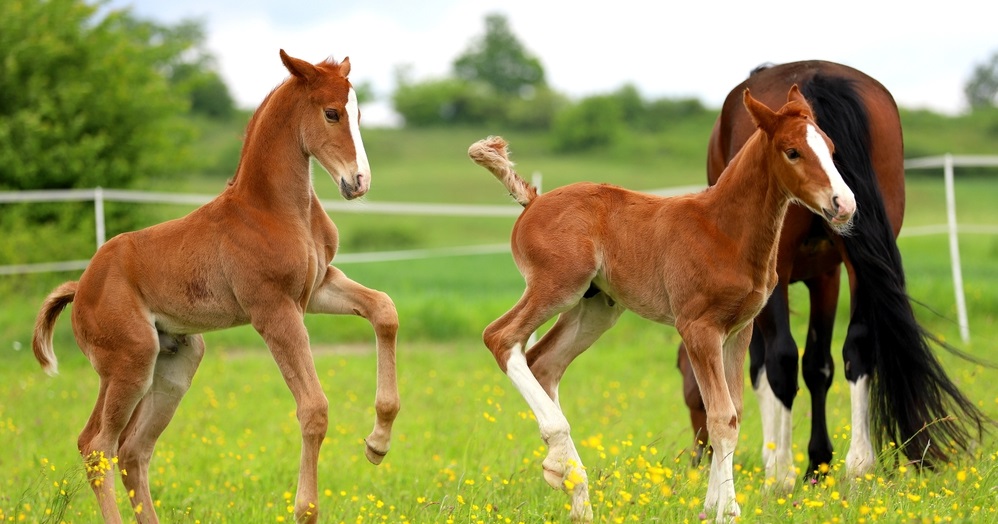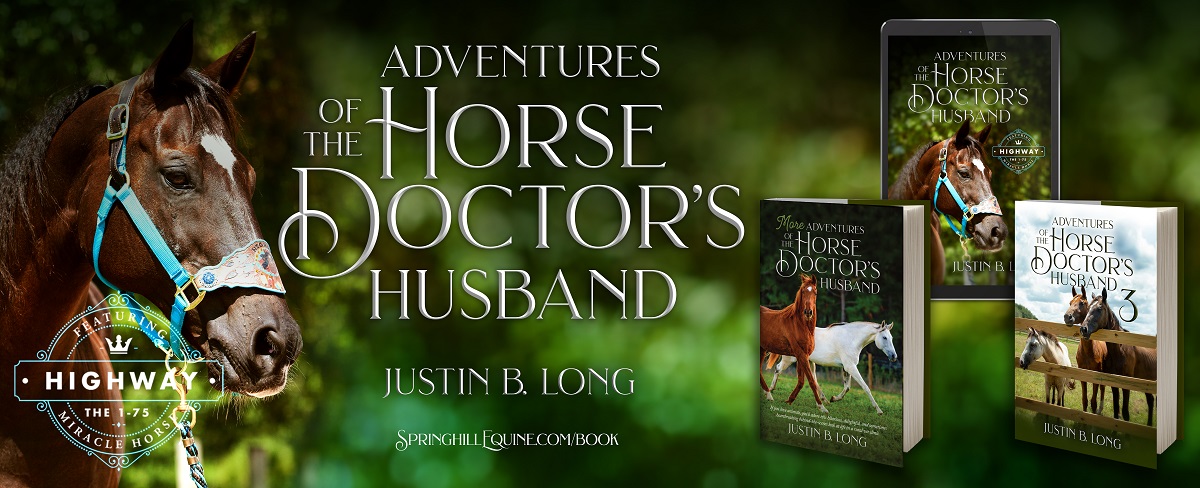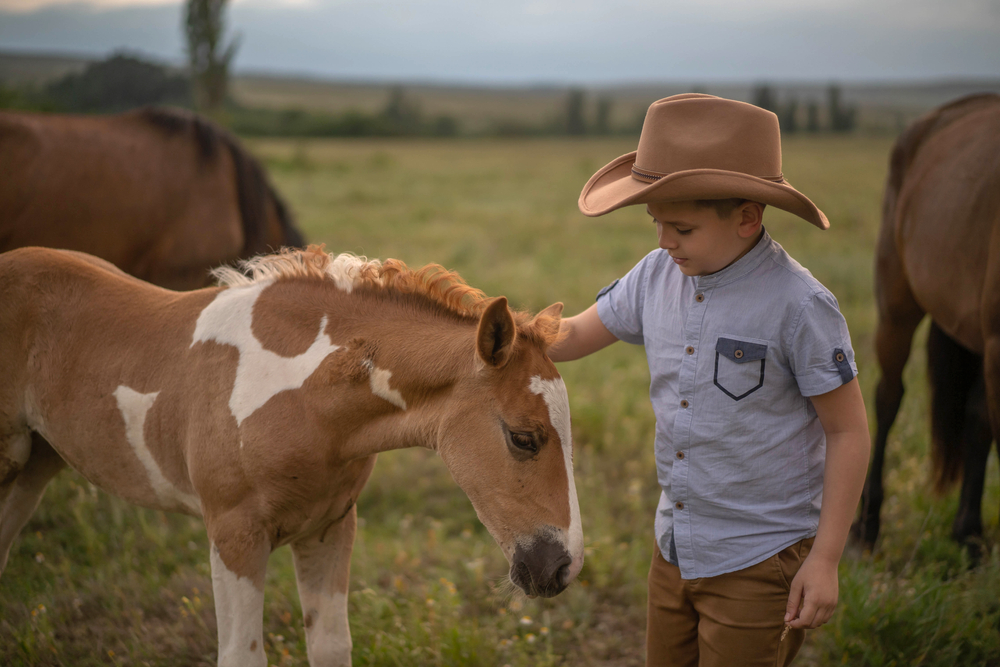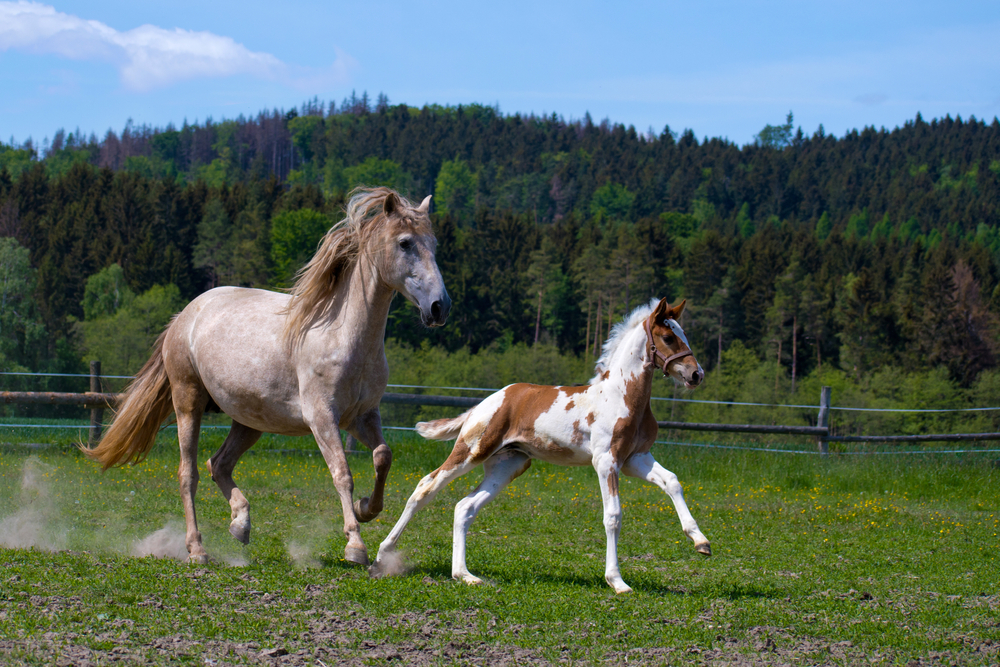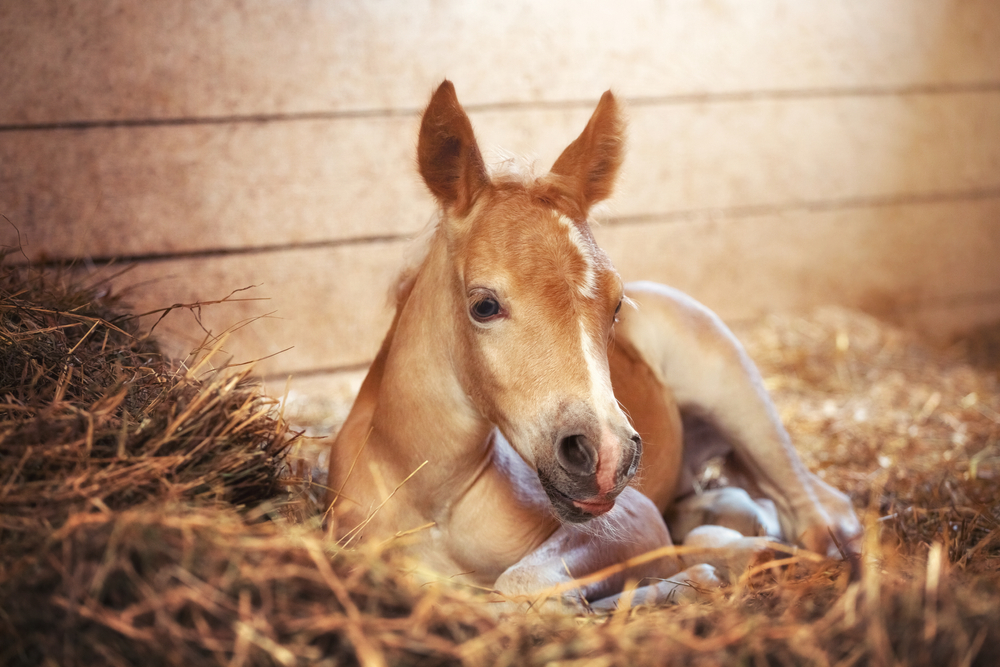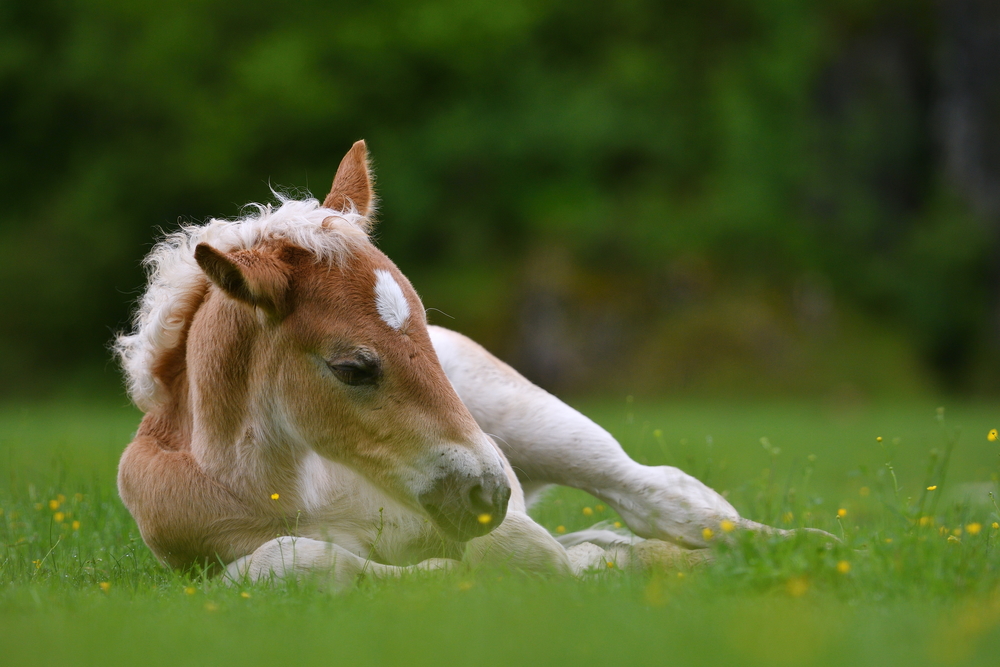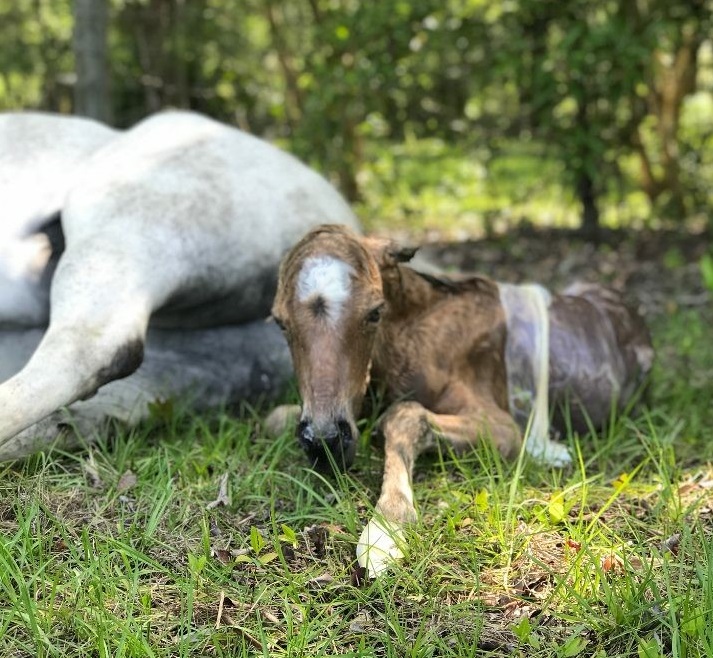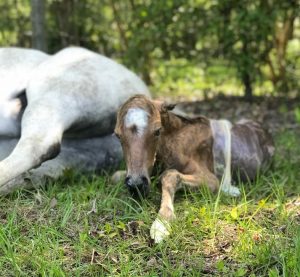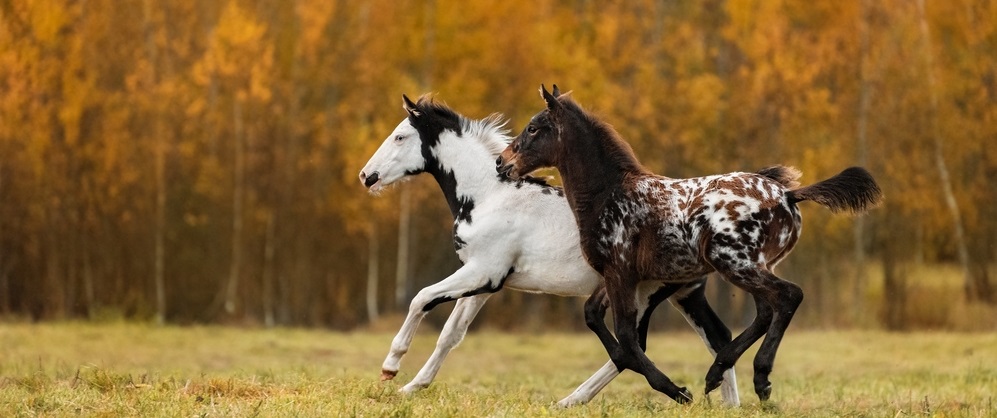
Foals and Ascarids
Whinny’s Wisdoms

Spring is moving into summer, the rains are coming, and lots of new foals are running around fields. Some of these frolicking fillies are harboring some extra passengers though…
Let’s wriggle into the world of roundworms, known to smart medically-minded mice like me as ascarids!
What are Ascarids?
Ascarids are small parasitic worms that live in the intestines of horses. They are called roundworms because, well, they have a round shape. These worms can grow to be several inches long and can cause health problems for foals. However, it’s not like foals are out there gobbling up full-sized worms in the grass (though I wouldn’t put it past them!). So let’s go over the lifecycle of these pesky parasites, and how they wind up in our horses.
- Egg Production: The life cycle of equine ascarids begins with adult female worms residing in the small intestine of the horse. These fecund females produce large numbers of eggs, which are then shed into the horse’s feces.
- Environmental Contamination: Once the eggs are passed in the feces, they contaminate the environment where the horse lives. This can include pastures, paddocks, or stalls where horses graze or spend time.
- Egg Development: In the environment, under suitable conditions of temperature and humidity, the eggs develop and mature over a period of several weeks to become infective larvae. This is dependent on temperature and humidity, but these eggs are quite robust and can often overwinter and remain infective on a pasture into the next foaling season.
- Ingestion: Foals become infected when they inadvertently ingest the infective larvae while grazing, eating contaminated feed or water, or through grooming behaviors where they ingest soil or other environmental material containing the larvae. We all know foals put their mouths on everything, so this part isn’t very hard!
- Larval Migration: Once ingested, the eggs hatch and larvae begin hepato-tracheal migration, arriving in the lungs about 1 week post infection. Here, they penetrate the alveoli and bronchioles, where they remain for another 2 weeks before they are coughed up into the pharynx and swallowed to return to the small intestine as more mature larvae. The first intestinal stages appear 3–4 weeks post infection.
- Maturation to Adult Worms: Inside the intestines, the immature worms continue to grow and develop into adult worms over the course of several weeks to months. Once mature, they begin producing eggs, completing this crazy, complicated lifecycle and perpetuating the infection.
- Egg Shedding: Adult female worms release eggs into the horse’s feces, restarting the cycle by contaminating the environment with new infective eggs.
Symptoms of Ascarid Impactions
When foals have a lot of ascarids in their intestines, they can actually lead to obstructions. Literally, a road block of worms! This can actually happen with live worms OR with dead worms after the foal has been given a dewormer. This is one of those (many) times when consulting with that veterinarian that you have a great relationship with about the best deworming protocol gives you the best shot at getting things right.
Sometimes even when we do everything right, those poor babies still end up with ascarid impaction. Here’s what that might look like:
– Swollen belly
– Not eating well
– Diarrhea
– Weight loss
– Lethargy
– High heart rate
Preventing The Impaction
There are some things that can be done to help prevent foals from getting infected with ascarids:
– Keep the environment clean: Regularly clean up manure and bedding to reduce the number of worm eggs in the environment.
– Deworming: discuss the protocol with our doctors, but often times they’re going to have you give dewormers every few months in a specific order and dose
– Fecal Egg Counts: if there is any question, just like with adult horses, we take a sample of poop and put it in our fancy machine to tell us how many and what type of parasites we have
– Quarantine new foals: Keep any new animals separate from others until they can be dewormed and checked for worms or other issues by our doctors.

Treating Ascarid Impactions
Here’s the scoop: these worms, when they get stuck, often have to be surgically removed. The surgery works a lot like other colic surgeries. Following surgery, the foal will be monitored closely at the hospital. It’s important for the referral docs to slowly reintroduce the foal to food and watch for signs of infection. This can often be a time and money-intensive process, but foals typically recover well from this surgery and go on to live happy, normal, lives.
Whinny’s Wisdom: Ensuring access to transportation for horses is paramount for all horse owners, but particularly crucial for those with higher-risk animals such as foals. Transportation facilitates timely access to veterinary care in case of emergencies, ensuring prompt treatment for any health issues that may arise.
Remember, failure to plan is planning to fail! If you are raising a foal, make sure you have a plan and a schedule worked out with your veterinarian to minimize risk on all health fronts. Foals are hard enough as it is, so don’t miss out on an opportunity to set yourself and your foal up for success!
Love and cheese,
Whinny
P.S. If you want to learn way more about parasites and deworming than this mouse can tell you, check out our podcast, Straight from the Horse Doctor’s Mouth! It’s free, and you can learn more than you ever knew you didn’t know by listening! Just click on the link to visit the Podcast Page of my website, or subscribe on Apple Podcasts, Spotify, or wherever you get your podcasts!
 Whinny’s Wisdoms is the official blog of Whinny the Clinic Mouse at Springhill Equine Veterinary Clinic in Newberry, Florida. If you liked this blog, please subscribe below, and share it with your friends on social media! For more information, please call us at (352) 472-1620, visit our website at SpringhillEquine.com, or follow us on Facebook!
Whinny’s Wisdoms is the official blog of Whinny the Clinic Mouse at Springhill Equine Veterinary Clinic in Newberry, Florida. If you liked this blog, please subscribe below, and share it with your friends on social media! For more information, please call us at (352) 472-1620, visit our website at SpringhillEquine.com, or follow us on Facebook!
[jetpack_subscription_form title="Subscribe to Whinny's Wisdoms"]
